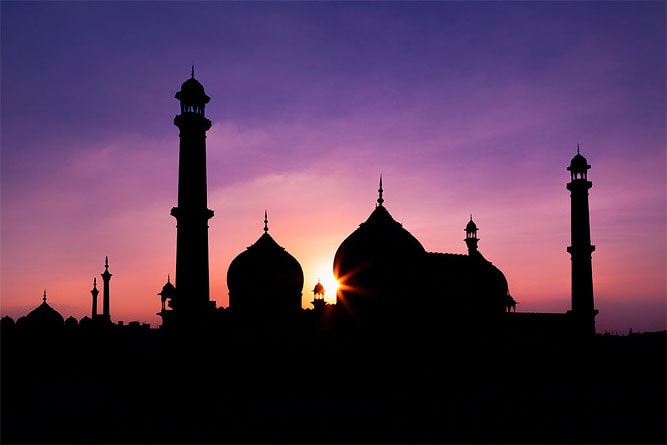Jama Masjid
Mosque in Delhi
must-see attraction
Opening hours: 8:00am-one hour before sunset, minaret 9:00am-5:30pm
Address: Jama Masjid Rd, Chandni Chowk, Delhi
Ticket price: tower ₹100, camera & video ₹300
Visit duration: People typically spend up to 1 hour here
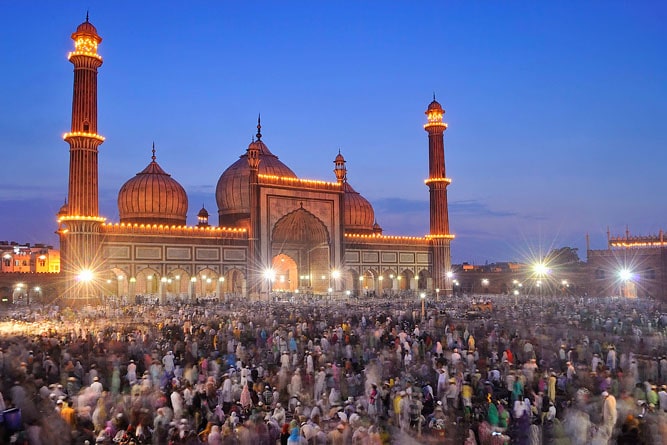
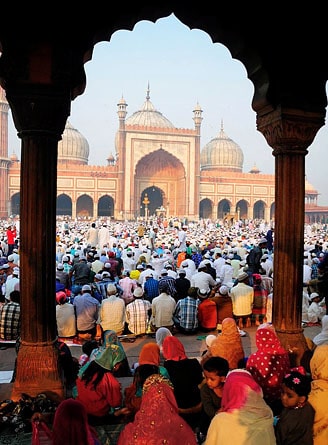
About Jama Masjid, Delhi
With its quasi-divine presence, the Jama Masjid stands as one of the largest mosques in India. It is situated in Shahjahanabad, Old Delhi. The lofty aura of the mosque depicts the majestic heritage of the Mughal era.
Jama Masjid became the regal mosque for the Mughals since its establishment. The cosmic importance of the mosque is acknowledged among its community around the world. The sublime sight of fellowship during the congregation for prayers never ceases to overwhelm.
History of Jama Masjid
The Jama Masjid was built by the Mughal Emperor Shah Jahan. It was constructed between 1650 and 1656. Ustad Khalil made the architectural design of the mosque while Shah Jahan's ministers, Sadullah Khan and Fazil Khan, supervised the construction of the mosque. It was one of the last monuments to be built during the reign of Shah Jahan.
Over ₹1 million was spent on the building of the Jama Masjid. Workers from Arabia, Persia, Europe and India were engaged in the construction of the mosque.
Shah Jahan invited Syed Abdul Ghafoor Shah Bukhari to be the Shahi Imam of the mosque. The Iman initiated the mosque on July 23, 1656.
When the East India Company took control of India, the British looked over the maintenance of the mosque during its initial stage. However, the first-ever Indian rebellion against the British, The Revolt of 1857, agitated them and they banned any congregation on the premises of the mosque. The mosque was renovated twice, once by the Nawab of Rampur and later by one of the Nizams of Hyderabad.
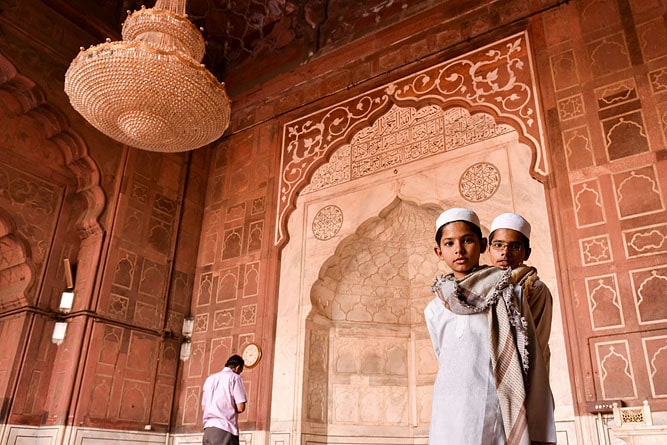
Architecture of Jama Masjid
Jama Masjid is 130 feet long and 89 feet wide. The Indo-Islamic architectural layout of the masjid consists of lofty gateways, archways, domes, minarets and a courtyard. During its construction, it was the largest mosque in the country.
The staircases lead to the gateways of the mosque which are thirty steps elevated from the street level. Beyond the three lofty gateways lies the courtyard. The gateways are built of red sandstones that have Persian patterns carved on them. The gateway of the east is three stories tall while the other two on the northern and the southern sides are two stories tall.
The quadrilateral courtyard or “Shan” is also made with red sandstones. The courtyard is enclosed by arcades. Chhatris, which are canopies above tombs, were built on them to highlight the edges of the Shan. The open space stretches 15 metres in width and 17 metres in length with an Ablution tank located at the centre. The tank is created from black marble.
Passing across the courtyard lies the main mosque or the prayer hall. The hall is 61 metres long and 27 metres wide and comprises 3 domes and 2 minarets attached at the front corners. The walls of the mosques have Arabic and Persian calligraphic inscriptions.
The minarets are 135 feet tall and each has 130 stairs inside them. The top of the minarets is closed by chhatris carved from marbles. The exterior walls of the tower follow the stripe pattern formed by white marbles on the red sandstones.
The front of the praying hall exhibits the Pishtaq or the Iwan feature in the centre with archways running on both sides. On the western Qibla wall, there are seven Mihrabs that divide the hall into seven bays. The Minbar, made of marble, is located on the right wing of the central Mihrab.
The floors of the mosques are furnished with black and white marble while the walls are built with red sandstone. The gigantic central dome and along with two domes on both sides bear the golden finials. The patterns on the white Persian domes are also in stripe form with red colour lines running on the surface.
Around the world, there are many Jama Masjids, three of them being in India. The highlighting feature of the Jama Masjid in Delhi is the extensive use of white marble along with red sandstones.
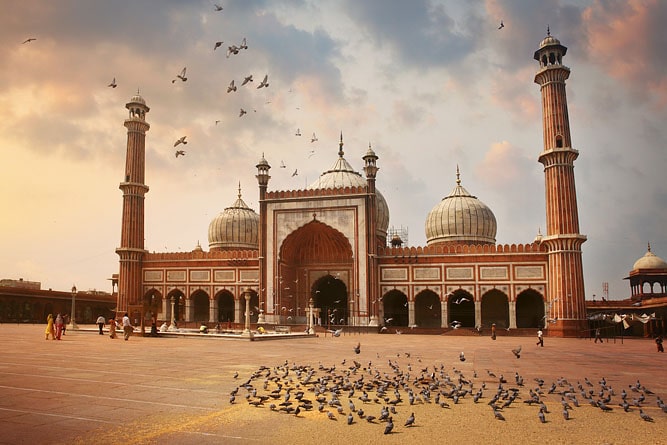
Entry fee and timings
Entry to the mosque is free for all. However, if you want to climb the stairs of the minarets and enjoy the view from the chhatris of the minarets, it would cost you ₹100. It is accessible from 9:00 am to 5:30 pm.
The Jama Masjid is open every day from 7:00 am to 12:00 pm and again from 1:30 pm to 6:30 pm.
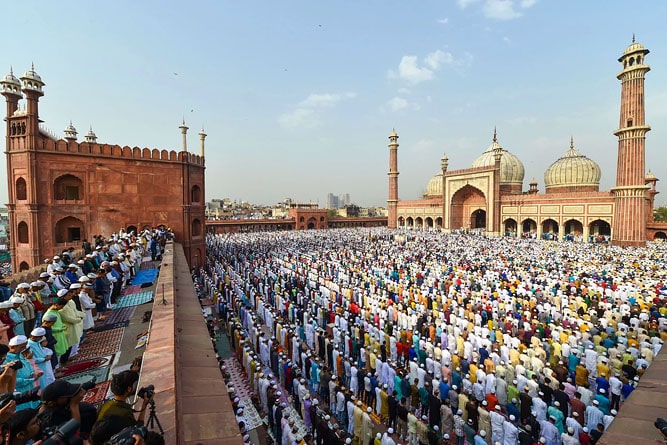
Facts and tips about Jama Masjid
- The mosque is also recognised by the name ‘Masjid-i-Jehan-Numa’ which translates to mosque commanding the view of the world. The name Jama Masjid comes from the word ‘Jumah’ which means Friday prayer or congregational prayer.
- Shah Jahan was influenced by the architecture of the Jama Masjid of Fatehpur Sikri, and also the Jama Masjid of Agra and implemented it on the structure of the Jama Masjid of Delhi.
- Wearing shoes is restricted inside the premises of the mosques. If you are worried about your shoes getting lost, you can carry them with you. Also, the mosques request to wear attires that cover the shoulders and legs of the visitor.
- During Eid and the entire month of Ramadan, the atmosphere of the mosques gets festive and has the maximum number of visitors during the eve of Eid.
- Only the Mughal royals entered the mosque from the eastern gateways.
How to reach Jama Masjid
Jama Masjid is located in the centre of Delhi, just a few minutes drive from Red Fort. The mosque can be reached from Connaught Place in about 15 minutes by car. Humayun's Tomb is a 20-minute drive away. From Qutb Minar and the Lotus temple, it takes approximately 40 minutes to drive to Jama Masjid.
See location on Google Maps
Other attractions near Jama Masjid
- Red Fort (Lal Qila) - 1.1 km
- Connaught Place - 3.5 km
- Humayun's Tomb - 7.0 km
- Lotus Temple - 15 km
- Qutb Minar - 19 km
FAQs about Jama Masjid
1. Can we enter during the time of prayer in the mosque?
No, respecting religious courtesy, non-Muslim people are not allowed during prayer time.
2. Is there any place to eat near the Jama Masjid?
Yes, there are many places to eat near the mosque. Do not enter the mosque with food.
3. Is there any good place to shop near the Jama Masjid?
Yes, the infamous Chandni Chowk is close to the Jama Masjid.
4. Can everyone visit the Jama Masjid?
Yes, everyone can enter Jama Masjid of Delhi but some areas are restricted for tourists.
